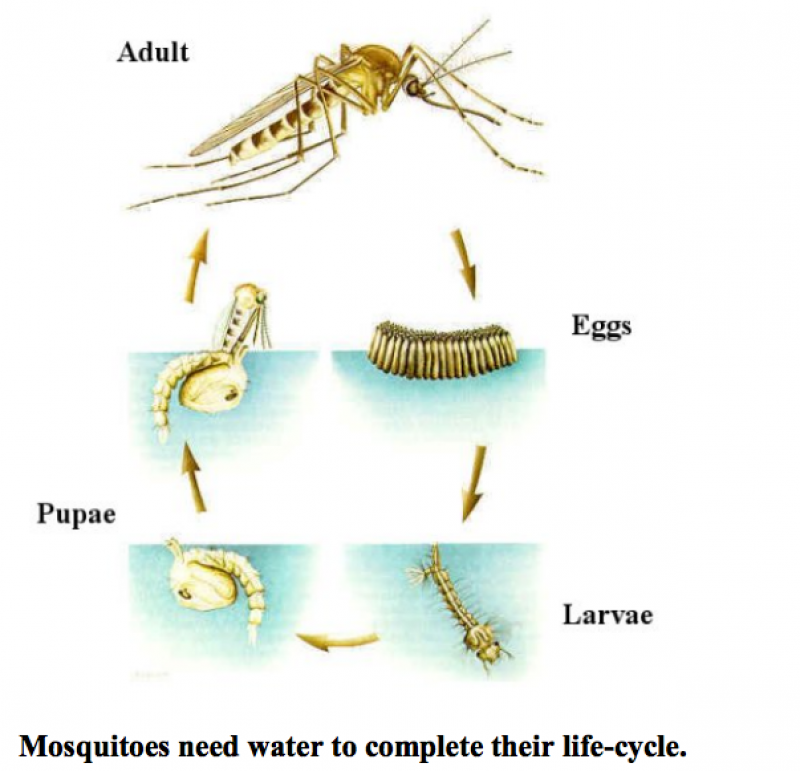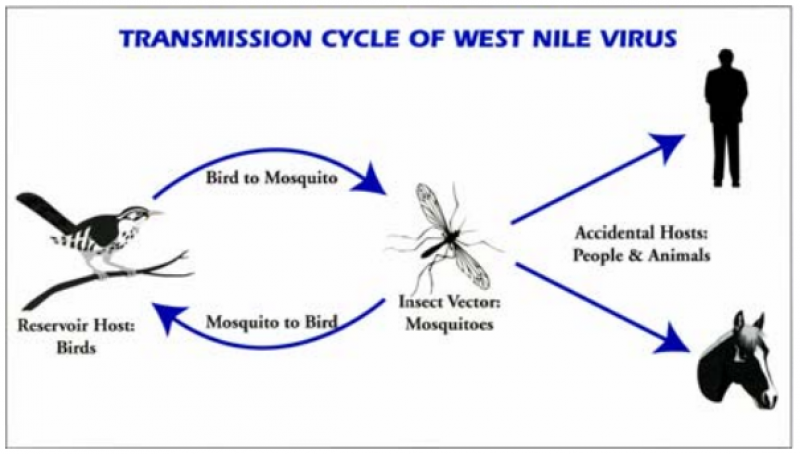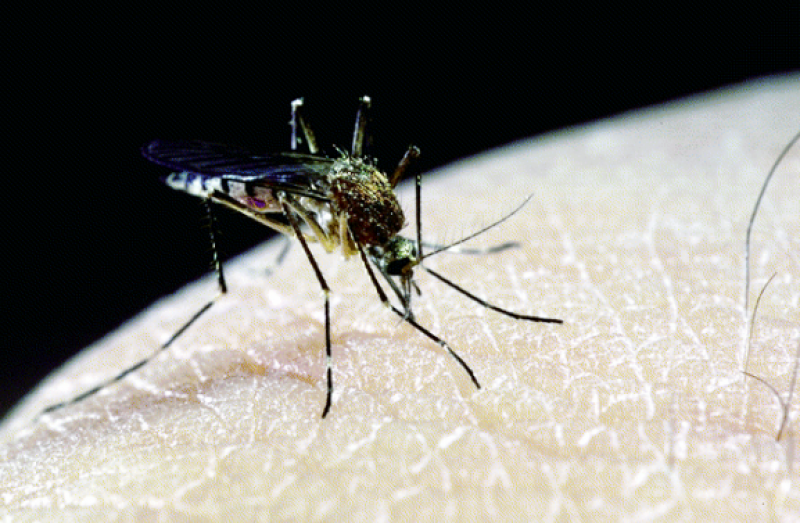
About West Nile Virus
Mosquitoes in urban settings can cause numerous health problems due to their ability to transfer, or vector, viruses and other disease-causing pathogens. At the beginning of July this year, 56 Arizonans had been confirmed to have West Nile virus, and all of the cases have thus far been located in the Phoenix valley. With human cases expected to soar this summer, our best defense is knowledge of the virus and mosquito management.
The Cycle of West Nile Virus
West Nile Virus is a mosquito-borne virus contracted through mosquito bites. Only about 60% of people who have tested positive for the virus ever knew they were being bitten by mosquitoes, so it’s advisable to just assume they are about between dusk and dawn.
People of all ages (including children) can contract the virus. About 20% of those who contract WNV will come down with what is called “West Nile fever”; the other 80% of those infected show no or only mild symptoms of the virus.
Symptoms of West Nile fever can include:
- Fever
- Headache
- Body aches
- Swollen lymph glands
- Tiredness
- Rash on the trunk of the body
About 1 out of every 150 people with West Nile Virus will develop a severe infection resulting in encephalitis (inflammation of the brain) or meningitis (inflammation of the lining of the brain and spinal cord). Unlike West Nile Fever, which develops with equal likelihood in persons of any age, the severe infection forms tend to occur more in people over 50 years of age.
Symptoms of encephalitis or meningitis include:
- High fever
- Neck stiffness
- Disorientation
- Muscle weakness
- Paralysis
- Headache
- Stupor
- Tremors, convulsions
- Coma
The Cycle
After a mosquito feeds on the blood of a bird infected with West Nile Virus, the virus goes through a short growth period before it is capable of being retransmitted – as few as four days for some mosquito species in Arizona. The infected mosquito, full of virus and ready to feed again, will look for a bird, human, or other animal for its next blood meal.
This is the basic transmission cycle of the virus as it moves easily from bird (reservoir host) to mosquito (vector) and then - incidentally - on to humans or other animals.
Humans and other animals are incidental hosts for West Nile virus. A mosquito cannot become infected by biting a human or pet infected with West Nile Virus. Therefore, humans, horses, etc. cannot not further virus transmission and are referred to as “dead end” hosts for the virus.
Prevention
The best way to prevent West Nile Virus is to minimize the number of mosquitoes since that is how the virus moves from bird host to human. As a general rule, the easiest way to deal with mosquito pests is to prevent them from breeding around us in the first place, and this is quite easy here in the valley.
Mosquitoes need wet conditions to lay their eggs and grow from an aquatic larva into a flying adult. HUMANS create the vast majority of the wet conditions used by mosquitoes in the Phoenix valley, and it is likely that many of us have mosquitoes developing in our neighborhoods and own backyards. We cannot eradicate every individual, but there are some very simple steps each of us can take to keep numbers low.
IPM Mosquito Management – Fight the Bite!
The most effective strategy for the community in general is prevention; consider the following:
- Check flower pots and other containers for excess water.
- Flush out the water in bird-baths and fountains every few days.
- Store boats, canoes and other objects so that they do not collect rainwater.
- Remove water that collects in depressions in tarpaulins covering boats and other equipment or objects. Rinse off water collecting on backyard trampolines and other items.
- Keep rain gutters free of leaves and other debris that prevent water from raining.
- Correct drainage problems in yards and playing fields to prevent rain and irrigation water from pooling for prolonged periods; report drainage problems in ditches or along roadways.
- Fill holes or depressions in trees with sand.
- Repair leaky pipes and outside faucets, and connect open waste-water drains to a sewage system or construct separate sump or leach lines.
- Empty water containers for pets and check livestock watering troughs and tanks, or add Gambusia (mosquito eating fish).
- Larvacides: mosquito “dunks” use bacteria (Bti) that is harmless to humans, pets and the environment. Dunks will effectively kill mosquito larva in any breeding (nonconsumptive) water source.
With education and awareness, we can limit the health threat posed by these pests in our urban environment.
3 Ways to Reduce Your West Nile Virus Risk
1. Avoid Mosquito Bites
Wear loose fitting long-sleeves, long pants and socks when outdoors. Mosquitoes may bite through thin clothing, so spraying clothes with repellent adds an additional protection layer.
Apply Insect Repellent Even if you are outside for just a short period of time. Approximately 40% of people confirmed to have WNV have no recollection of being bitten by mosquitoes.
Use a DEET product or a good non-DEET alternative (Bite Blocker or Off Botanicals), and if you are outside for more than a few hours reapply repellent. The higher the temperature the more frequently you must reapply repellent for it to be effective.
- Apply repellents only to exposed skin and/or clothing (as directed on the product label). Do not use under clothing.
- Never use repellents over cuts, wounds, or irritated skin.
- Do not apply to eyes and mouth, and apply sparingly around ears. When using sprays do not spray directly onto face; spray on hands first and then apply to face.
- Do not allow children to handle the products, and do not apply to children's hands. When using on children, apply to your own hands and then put it on the child.
- Do not spray in enclosed areas. Avoid breathing a repellent spray, and do not use it near food.
- After returning indoors, wash treated skin with soap and water or bathe. If you suspect that you or your child is reacting to an insect repellent, discontinue use, wash treated skin, and then call your local poison control center if symptoms persist.
2. Mosquito-Proof Your Home and Yard
Drain Standing Water
Mosquitoes lay their eggs in standing water. Limit the number of places around your home for mosquitoes to breed by getting rid of items that hold water.
Install or Repair Screens
Some mosquitoes like to come indoors. Keep them outside by having well-fitting screens on both windows and doors. Offer to help neighbors whose screens might be in bad shape.
Check for Indoor Breeding Sites
If a female mosquito wonders inside your home she will utilize any water reservoir she can find. Check for wriggling larvae in the toilet cisterns that are not flushed daily. Maintain water in drain traps. Use sticky tape over floor drains, sink over flows, etc. to see if you can catch mosquitoes emerging from areas you cannot see. Fogging for adults is a method sometimes employed by the city or county.
Learn About mosquito Fogging
For information on fogging in Maricopa County, call (602) 372-3000.
3. Help Your Community
Gently educate and communicate with the community around you. Report areas that are breeding mosquitoes to the Vector Report Complaint Line (602) 506-6616 or file your mosquito activity concern at https://www.maricopa.gov/632/Vector-Control.
After Bite Care
Several strategies exist for relieving the itch of mosquito bites. The first step is the clean the bite area with soap and water. Topical corticosteroids can reduce the rash, itching, and discomfort. Topical diphenhydramine and caine-containing derivatives should be avoided because of concerns about inducing allergic contact sensitivity.
Oral antihistamines can be effective in reducing the symptoms of mosquito bites. Use of a cold compress can be helpful, but do not apply ice directly to the skin.
To read more about mosquito-borne viruses which can affect human and pet health, visit www.westnileaz.com or call the Vector Department at the AZ Department of Health & Public Services, 602-364-4562, to report mosquito hot spots.
Information taken from:
Bennett, Gary W., John M. Owens, and Robert M. Corrigan. Truman’s Scientific Guide to Pest Management Operations. 6th ed. Purdue University, 2003. 574 pp.
CDC: Division for Disease Control & Prevention, Fort Collins, CO www.cdc.gov/westnile
Marin/Sonoma Mosquito & Vector Control District website, Cotati, CA: https://www.msmosquito.org/
Olkowski, William, Sheila Daar, Helgo Olkowski. Common Sense Pest Control. The Taunton Press, 1991. 715 pp.
University of Arizona Cooperative Extension website: http://cals.arizona.edu/
Womack, M. 1993. The Yellow Fever Mosquito, Aedes aegypti. Wing Beats, Vol. 5(4):4.
-
Food Access
Finding Healthy Food in ArizonaConnecting people, food, and resources through partnerships with producers, non-profits, for-profits and government.
-
Get a License
Apply For, Renew, or look up a LicenseEnter our Licensing and Payment System then use the filter at the top to find the license you want to apply for or renew or find existing license information, including CEU's


